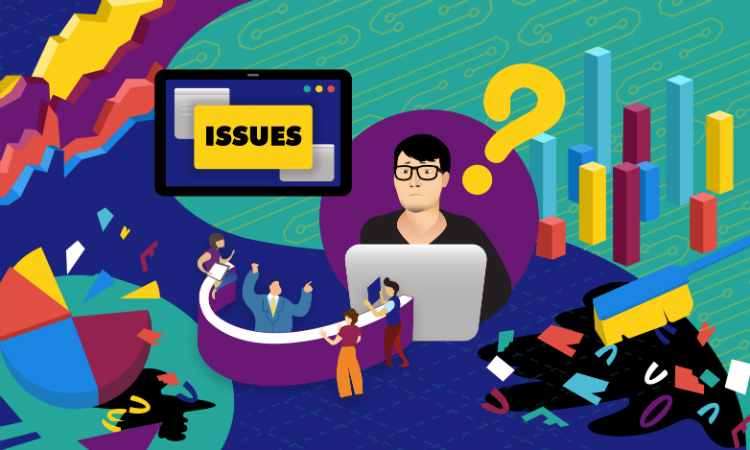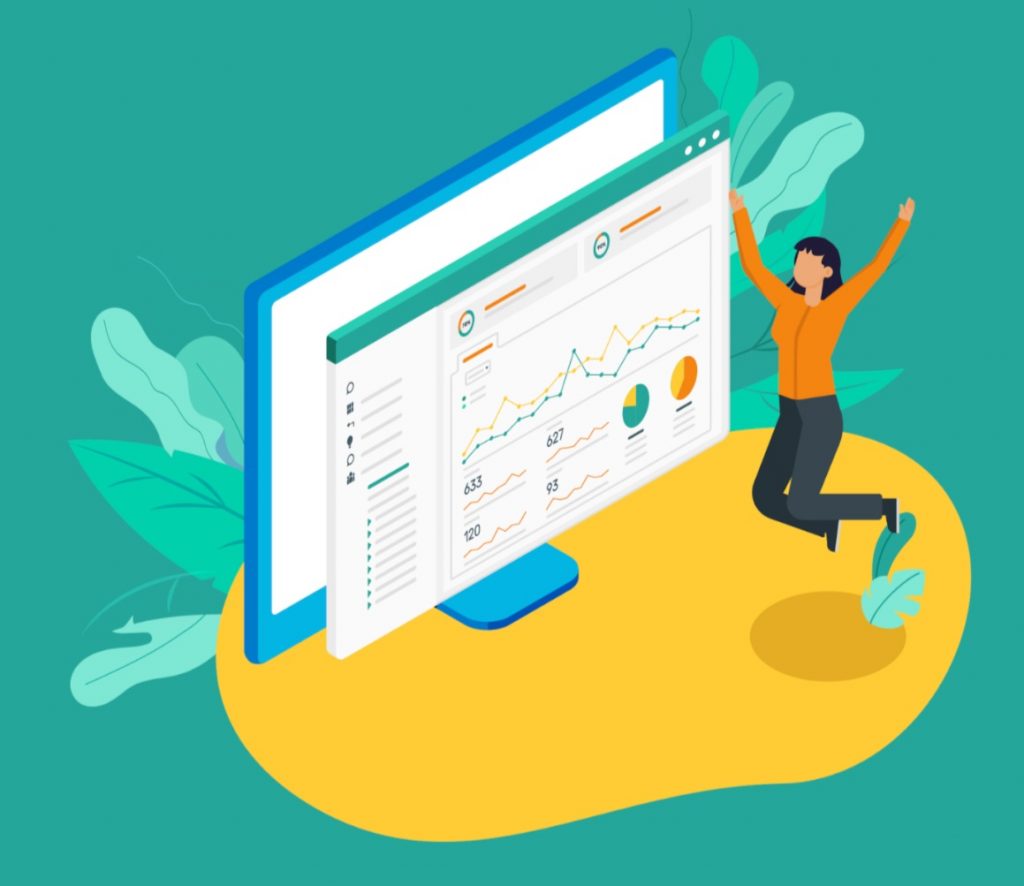Surviving 2020 and into the “New Normal” with Relational Analytics

Along with the tragedy of Covid19 and the loss and disruption it brought to people’s lives, 2020 shall be remembered in business schools as a period of a forced reimagining of a majority of companies’ operating models. We believe it will also be remembered for People Analytics finally proving its value and taking centre stage in the management tool kit.
People Analytics has played a fundamental role in helping companies not only mitigate the immediate Covid impact on organisations and employees but also in helping companies plan and adapt for a future where remote/ hybrid operating models are not the exception, but the norm;— “The New Normal”.
“Which employees are becoming isolated from their teams? “
“Are managers maintaining strong relationships with their teams during WFH?”
“How do we ensure new hires are still able to build strong internal networks during remote on-boarding?”
“Is remote working leading to functional silos which affect how we innovate?”
“Which employees are at risk of burnout/ collaborative overload? Are employees getting enough flow time to focus on their work between virtual meetings?”
These were the concerns we heard from our clients as early as March, even before the full extent of the influence the pandemic would have on work. Based on this feedback and learnings from SARS and other earlier pandemics, we made an early decision that Panalyt had to radically and rapidly adapt to help our clients understand how and where to rethink talent management when transitioning to remote work, and proactively identify risks and possible interventions across the remote employee lifecycle.
As a result, we’ve been primarily focused through this year on providing actionable employee insights across integrated people, productivity and digital communication/collaboration data; what we define as Relational Analytics.
We created a lens into how work really gets done at remote organizations by mining behavioural insights from internal and external employee communication and collaboration metadata, and then correlating these behaviours with desired outcomes such as increased productivity, innovation, engagement, wellness and reduced attrition, to enable our clients to nudge their employees to adopt desired behaviours to help them succeed in their roles.
It’s been a very exciting year for the Panalyt team – the Panateers! Overcoming the technical and UI/UX complexities of making the niche field of Organizational Network Analysis more relevant and practically useful to HR and business leaders in an ethical manner, and building new solutions for the innovative use cases brought forward by every client we’re working with to drive improved employee and business outcomes.
We want to thank our clients for their forward-thinking approach in giving us the opportunity to work on this very exciting field, and we are very grateful to the experts and practitioners in the People Analytics and Organizational Network Analysis communities who were so generous in their advice and feedback as we built out the Relational Analytics aspects of Panalyt.
Most importantly, we want to thank all of the awesome Panateers, for taking this leap of faith along with us and for working so very hard this year to create tools to help make people’s working lives better during this crisis and beyond.
We are pleased to share some of the tools and use cases we have been collectively working on at Panalyt, as well as some of our other highlights from this exceptionally tough year for everyone.
Empowering HR to Prepare Organizations For Virtual Working
Whilst the shift to remote/hybrid work has been largely accelerated due to the COVID-19 pandemic, we see this as a long-term trend that is here to stay. Several norm-setting organizations have long-term plans to allow employees to work remotely and this will clearly evolve and spread.
Where traditional people management techniques based on observations in the workplace become obsolete, it is increasingly important to empower HR and line managers with the tools to understand, influence and improve the Remote Employee and Manager Experience.
The growing popularity of Employee-Experience(EX) centric companies is juxtaposed with the steady shrinking of HR headcount over the past decade, so it has been increasingly necessary for People Analytics to focus on empowering managers and HR Business Partners with insights into where and how they can improve daily People Management decisions, rather than using People Analytics as a purely strategic decision-making tool. By using Digital Collaboration to track and understand Employee Engagement, Relational Analytics provides a way to get immediate insights into how employees are integrating with their teams and the organization and identify where and how to make the necessary interventions to integrate disengaged employees.
Pairing these insights from Relational Analytics with survey results, performance data and managerial EQ gives a powerful view of how internal social networks lead to improved Employee Engagement and Performance, which can be used to coach employees to develop those internal networks to succeed in their roles. Relational Analytics is an extremely powerful addition to the managerial and people analytics toolkit to engage, develop, and retain top talent.
Improving Remote Employee Engagement & Wellness
According to an executive study by the IBM Institute for Business Value and Josh Bersin,
“C-suite executives now rank organizational complexity, inadequate skills & employee burnout as the top 3 greatest challenges their businesses will face in the next 2 years”
“84% of CHROs say over the next two years they will prioritize agility and flexibility in the workforce”
“Only 19% of HR executives say their HR function has the proper business acumen or capabilities to do so.”
Employee burnout and wellness have become CXO level initiatives, but HR has lacked the tools to tackle these issues effectively. The shift to remote/ hybrid work models has only made this more difficult. Relational Analytics provides an objective means for companies to look at how the strength of relationships between employees, or groups of employees, has been affected by the shift to remote/ hybrid work environments.
This allows companies to easily understand, in real-time, key questions around Organizational Health, Remote Employee Engagement, Employee Isolation and Cultural Onboarding Speed.
For example, an Increase in Response time or Non-Response % by one individual, or across a team, may indicate overwork, or loss of engagement or team cohesiveness. An aligned increase in the overall communication volume will support a hypothesis of overwork, rather than an engagement issue. An aligned reduction in the relationship score and number of relationships will support the possibility of a loss of engagement. These ideas are explained in greater detail in this article: Improving Remote Employee Well-Being with Relational Analytics
Relational Analytics empowers companies to diagnose potential problem areas in the remote Employee Experience and identify where necessary interventions are required to take a pro-active approach towards employee wellness, rather than always reacting and putting out fires.
For example, the change in the average relationship score for individuals or teams over a period time, along with the change in the volume of those relationships, can identify employees at risk of isolation.
Employees who are not well-integrated with the organization can have serious impacts on employee productivity, and can potentially lead to attrition.

Collaboration Analytics, a subset of Relational Analytics, can be incredibly powerful for identifying employees at risk of burnout/ collaboration overload. Enabling HR & managers with the tools to understand changing work patterns for their remote teams allows them to recognize irregularities in increased after-work hours collaboration activity, along with understanding patterns in the volume of communications and the time spent in meetings.
For example, a manager can identify if an employee is not getting enough flow time between meetings during the week to do focussed work and coach the employee to change how they schedule their meetings, or adjust the employee’s workload accordingly.

Accelerating Remote Digital Cultural Onboarding
Effectively onboarding and integrating new hires remotely into the organization has been a major concern for almost every company we have spoken with in the past year.
With Relational Analytics, HR and line managers can very quickly assess how new hires are integrating with their teams and the wider organization during onboarding, and beyond. Where they see integration below the norm, they can plan interventions to help new hires build up the internal networks needed to succeed in their roles.
Ensuring new hires are connected with incumbent high performers in similar roles can help accelerate new hire performance and time to productivity.
Here is an example of how a global Japanese conglomerate is leveraging Relational Analytics with Panalyt to completely revamp their digital onboarding program to improve the time to productivity for new hires and increase collaboration across different geographic locations:
From a Succession Planning perspective, Relational Analytics provides a birds-eye view of how new hires (or employees who have been promoted/ moved laterally) are building relationships with the key internal and external connections who enabled people previously in that role. Here is an example looking at how Relational Analytics can be applied in an external context to assess how new sales reps are building up their relationships with their target client accounts:

Improving Remote Sales Effectiveness
While this use case is related to sales the same insights can be applied to any customer-facing team or even to operations and recruitment networks. By uncovering hidden relationship patterns for a sales team’s customer and intra-company networks, Relational Analytics can be a very powerful tool for Remote Sales Managers to identify points of intervention and coaching.
Measuring the effectiveness of customer relationships allows sales managers to ensure internal alignment to deal progression and gain accurate deal forecasting based on customer responsiveness.
Companies can also model how attrition risk potentially translates to commercial risk by integrating Relational network data with people data and commercial data.
This use case is explained in detail in this article: Driving Business Performance with Relational Analytics

Breaking Down Organizational Silos & Accelerating Change Management/Transformation Initiatives
Layering different groups on the internal social networks uncovered with Relational Analyticscan quickly reveal groupings or silos of high or low performers, and can quickly reveal if these align with organisational, location, gender or other groupings.
It is very common for high-performers in an organization to form silos and cliques within themselves, but Relational Analytics can now allow organizations to ensure all employees have access to the internal social networks needed to be successful in their roles and realize their true potential. For example, HR can effectively pair High-Potential talent with High-Performers through mentorship programmes and assess the strength of these mentor-mentee relationships and intervene as needed.

From an Innovation perspective, Relational Analytics can be applied to understand the cross-pollination of knowledge between teams/departments/locations, identify potential silos and identify employees acting as bridges/ knowledge brokers between different groups of employees.
Relational Analytics can also be used in a similar manner in a Process Management/ Organizational Agility context to identify potential bottlenecks in the information-sharing/ decision-making flow of an organization.
In addition, companies can leverage Relational Analytics to increase the success of Change Management initiatives by identifying which individuals can be leveraged as Organizational Influencers and Change Agents to influence/ nudge their peers to drive the adoption of desired changes in a hyper-targeted manner, as compared to the conventional top-down approach.

Tackling Major Societal Issues: Diversity, Equity & Inclusion
In addition to Covid 19, issues of racial and gender inclusion continued to grow as vitally important issues in the workplace. As Diversity, Equity & Inclusion increasingly becomes a C-level concern, People Analyticswill play an integral role in ensuring companies are effectively hiring, retaining and developing diverse talent.
Some of the questions around Diversity, Equity & Inclusion which we’re currently looking to answer with Relational Analytics at Panalyt are:
- Do diverse talent have the same access/ relationship to senior colleagues/ managers as compared to other colleagues in the same job, at the same level and tenure?
- Does diverse talent get the access/ mentoring that will develop their careers and give them senior visibility?
- Is diverse talent actually integrating with the organization and building influence outside of homophilic associations fostered through ERGs?
- Which employees should we leverage as influencers and change agents to drive successful adoption of DEI initiatives across the organization?
Getting work done in highly complex organisations requires efficient collaboration between the different individuals involved in a project, but organizations have not previously had the tools to understand these organizational dynamics at scale. Relational Analytics provides a giant leap in understanding how we can create more efficient and agile organizations.
Our pioneering work on Relational Analytics has led to us being highly rated in RedThread Research‘s review of People Analytics products ( https://lnkd.in/dxMbQ27 ) & featured in David Green‘s Digital HR Leaders podcast series on how People Analytics is responding to WFH (https://lnkd.in/ds4t-5V). Panalyt was also named the winner of the 2020 Excellence Award in the Analytics Service Category at the 5th annual HR Technology Awards sponsored by the Japan Ministry of Economy, Trade, and Industry.
We are proud to be recognized for the work we’ve done, but the real reward is in the feedback from teams who have been able to support their people better during this trying year.
We hope you’re excited as we are about the fresh promise of a new year and the promise of Relational Analytics to transform how we look at People Management as remote/ hybrid organizations become the norm. We are looking forward to making better people decisions with you in 2021!
Daniel J West & Yusuf Raza
Co-Founders @ Panalyt
December, 2020
About Panalyt
Panalyt bridges the People-Data Gap, enabling real-time, uniform access to relevant people data, reports, and insights for CxOs, HR and business managers.
People data, including employee interactions and connections is combined with business data empowering businesses to leapfrog to data-driven decision making, eliminating bias and improving engagement, sales effectiveness, productivity and, as a result, business performance.
Interested in a further discussion on how People Analytics and Relational Analytics can help you drive improved employee and business outcomes? Book a 30-minute discovery call with our Panalyt co-founders to learn more!







